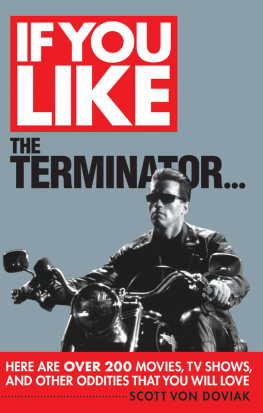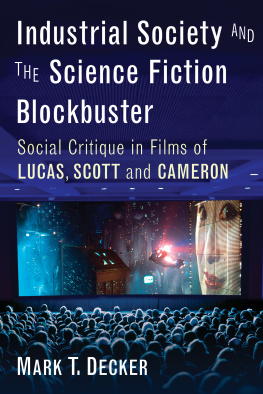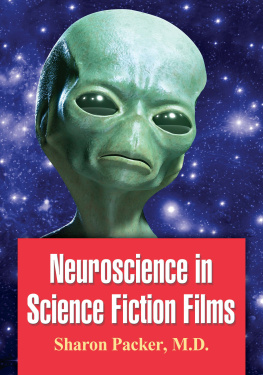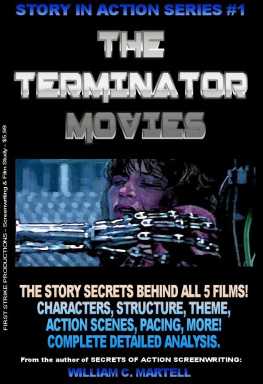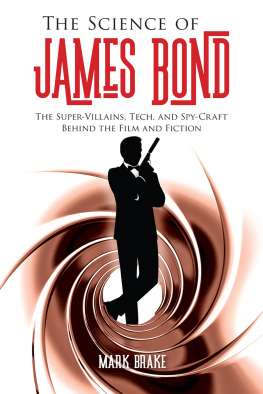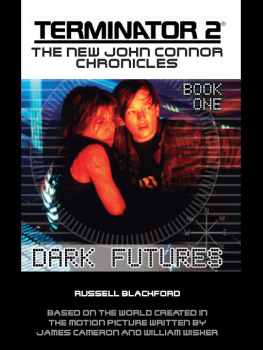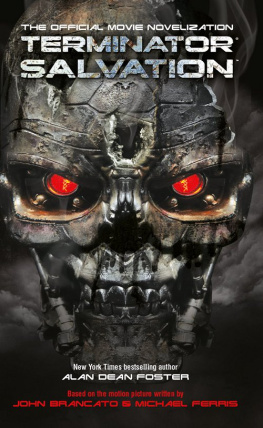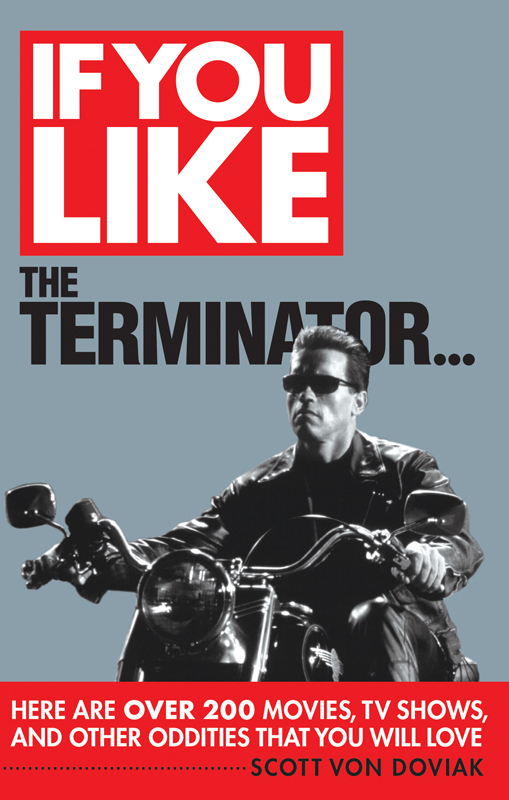
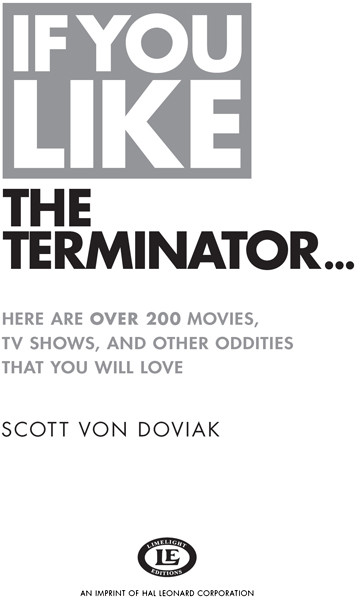
Copyright 2012 by Scott Von Doviak
All rights reserved. No part of this book may be reproduced in any form, without written permission, except by a newspaper or magazine reviewer who wishes to quote brief passages in connection with a review.
Published in 2012 by Limelight Editions
An Imprint of Hal Leonard Corporation
7777 West Bluemound Road
Milwaukee, WI 53213
Trade Book Division Editorial Offices
33 Plymouth St., Montclair, NJ 07042
Book design by Michael Kellner
Library of Congress Cataloging-in-Publication Data
Von Doviak, Scott, 1967
If you like the The Terminatorhere are over 200 movies, TV shows, and other oddities that you will love / Scott Von Doviak.1st pbk. ed.
p. cm.(If you like)
Includes .
ISBN 978-0-87910-397-2
1. Terminator (Motion picture) 2. Terminator 2 (Motion picture) 3. Terminator 3 (Motion picture) 4. Science fiction films. 5. Science fiction television programs. I. Title.
PN1997.T396V66 2012
791.4372dc23
2012014931
ISBN 978-0-87910-397-2
www.limelighteditions.com
In memory of Jane Donnelly Vdoviak,
December 17, 1943January 21, 2011.
I miss you, Mom.
Contents
First and foremost, thanks to my editor Mike Edison for giving me the opportunity to spend so much time in the company of evil robots and computers, and to Leonard Pierce for recommending me for this project and for raising the bar with his own entry in this series, If You Like The Sopranos
Id also like to thank those perceptive individuals who took a chance on my writing along the way, including but not limited to Chris Gore, Christopher Kelly, Cary Darling, Peter Smith, John Seven, Sean ONeal, Keith Phipps, Erik Adams, Todd VanDerWerff, and the late Arthur Lazere.
And finally, heres to the Machines, without which this book would not have been possible: laptops, DVD players, videogame consoles, streaming digital video, online databases and libraries, handheld devices, and word-processing software. I truly appreciate your help, so when the War Against the Machines begins, please forgive me for all the mean things I wrote about you in this book.
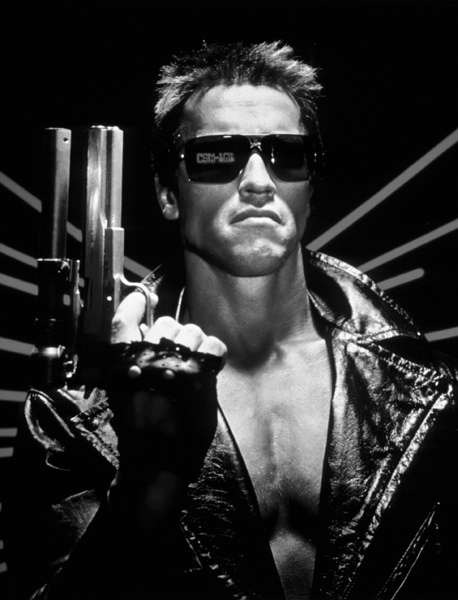
Your future is in his hands. (Hemdale/Photofest)
Introduction
Not much was expected of The Terminator when it was released in theaters on October 26, 1984. Perceived as a B movie that might enjoy a week or two of success at malls and drive-ins before being consigned to late-night television purgatory, the low-budget sci-fi thriller shocked industry pundits by debuting to generally positive reviews and the number-one spot on the box-office charts. But not even the most optimistic observer could have predicted that the movies director would go on to become one of the most successful filmmakers in history, that its star would dominate action cinema for the better part of two decades, or that the film itself would spawn a billion-dollar franchise that continues to this day.
I was sick and dead broke in Rome, Italy, James Cameron told Starlog magazine in 1984, with a fever of 102, doing the final cut of Piranha II. Thats when I thought of Terminator. I guess it was a fever dream! According to Cameron biographer Rebecca Keegan, that dream involved a chrome torso, emerging phoenixlike from an explosion, and dragging itself across the floor with kitchen knives. As creation myths go, its not bad, although in a less guarded moment, Cameron let it slip that hed ripped off a couple of Outer Limits episodes written by Harlan Ellison. (More on that in .) Whatever the case, the story of the Terminator, a cyborg assassin sent back in time by a computer-run society in order to kill the mother of a future resistance leader before he can be born, came together quickly. Cameron cranked out a forty-page treatment, which he passed on to producer Gale Anne Hurd, a fellow graduate of the Roger Corman school of filmmaking hed met during the production of Battle Beyond the Stars. He didnt want money, just a guarantee that the movie wouldnt be made without him in the directors chair.
That proved to be an offer every studio in Hollywood could refuse, but fortunately, a couple of fellow Corman vets who had landed at Orion Pictures agreed to distribute the film if Corman and Hurd could find financing for its production. Enter Hemdale Films, a tiny production company run by John Daly, who offered to put up $4 million for The Terminators budget. Accustomed to working on a shoestring during his Corman days, Cameron agreed (although the final budget would end up closer to $6.5 million) and, with the assistance of Hurd and his boyhood friend William Wisher Jr., went to work on the screenplay.
The story of The Terminator was ingenious in its simplicity. Kyle Reese, a soldier from the year 2029, is sent back in time to 1984 in order to protect Sarah Connor, the mother of Reeses commanding officer in the War Against the Machines, John Connor. Sarah needs Reeses protection because the machines that rule the world in the post-apocalyptic future have sent their own soldier back in timea cybernetic organism programmed to terminate Sarah and prevent John Connor from ever being born. What follows is a relentless chase, in the course of which a number of police officers and innocent bystanders are killed, and Sarah finds the inner strength to transform herself from waitress to warrior even as she and Kyle are falling in love. In the end, Sarah destroys the Terminator, but not before it kills Kyle Reese, the father of her unborn son, John.
With the screenplay completed, it was time for Cameron to cast his film. His first choice to play the Terminator was Lance Henriksen, an actor hed worked with on Piranha II. (In fact, Henriksen had already given the role a test run by showing up for Camerons pitch meeting at Hemdale with gold foil on his teeth and gruesome makeup on his face.) The studio countered with a bizarre casting suggestion: O. J. Simpson. Cameron, revealing the limits of his imagination, could not picture The Juice as a killer, nor could he stomach Orions preferred choice for the role of Kyle Reese: Arnold Schwarzenegger. The director agreed to a lunch meeting with the Conan star, fully intending to sabotage it, but was instead charmed by Schwarzenegger. It eventually became clear that, although his agents were pushing him for the heroic role of Reese, the actor was much more captivated by the Terminator. Cameron had found his villain.
Henriksen was given the lesser role of a homicide detective investigating the Terminators killing spree, while another actor Cameron had considered to play the cyborg, Michael Biehn, ended up with the part of Reese. Rounding out the main cast in the crucial role of Sarah Connor was Linda Hamilton, a relatively unknown actress Cameron felt could convey both the toughness and the vulnerability of the character. Filming was initially scheduled to begin in Toronto in the spring of 1983, when the production hit a snag: Dino de Laurentiis exercised an option he held on Schwarzenegger for a Conan sequel, and The Terminator was put on hold for a year while the actor shot Conan the Destroyer.
When filming finally began in March 1984, it was in downtown Los Angeles, not Toronto. Camerons experience with Roger Corman paid off, as he was able to stick to a tight schedule, while shooting primarily at night. He recruited Stan Winston to create the special Terminator effects, including Schwarzeneggers makeup and a full-size mechanical puppet, while SFX shop Fantasy II contributed a stop-motion animated Terminator, as well as the futuristic battle scenes. After production wrapped in June, Cameron went into editing overdrive in order to deliver the film in time for its scheduled fall release.
Next page
